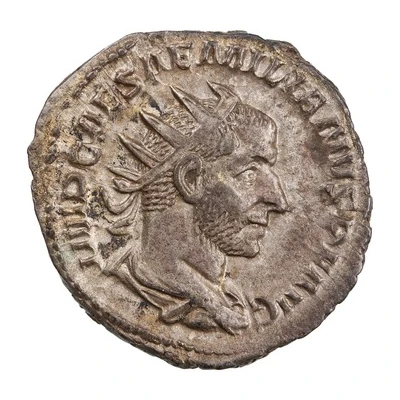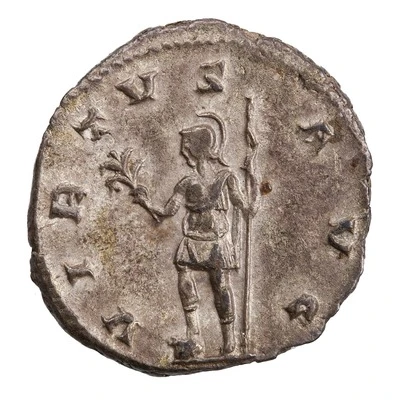Antoninianus - Aemilianus VICTORIA AVG; Victory
253 year| Silver | - | - |
| Issuer | Rome › Roman Empire (27 BC - 395 AD) |
|---|---|
| Emperor | Aemilianus (Marcus Aemilus Aemilianus) (253) |
| Type | Standard circulation coin |
| Year | 253 |
| Value | Antoninianus (1) |
| Currency | Antoninianus, Reform of Caracalla (AD 215 – 301) |
| Composition | Silver |
| Shape | Round (irregular) |
| Technique | Hammered |
| Demonetized | Yes |
| Updated | 2024-10-05 |
| Numista | N#284694 |
|---|---|
| Rarity index | 100% |
Reverse
Victory, winged, draped, advancing left, holding wreath in right hand and palm in left hand.
Script: Latin
Lettering: VICTORIA AVG
Translation:
Victoria Augusti.
Victory of the emperor (Augustus).
Comment
Source:Online Coins of the Roman Empire (OCRE)
Interesting fact
The Antoninianus coin was introduced during the reign of Emperor Antoninus Pius (138-161 AD) as a replacement for the denarius, which had been the standard Roman silver coin for centuries. The Antoninianus was made of silver, but it was smaller and lighter than the denarius, with a lower silver content. Despite its lower value, the Antoninianus was still widely accepted and used throughout the Roman Empire, and it remained in circulation for over a century. One interesting fact about the Antoninianus is that it features a unique design on its reverse side. While most Roman coins depicted images of gods, goddesses, or other mythological figures, the Antoninianus features a representation of the Roman Empire's military prowess. The reverse side of the coin shows a personification of Victory (Victoria) standing on a globe, holding a wreath and a palm branch. This design was meant to symbolize the Roman Empire's dominance and military victories. Overall, the Antoninianus is an interesting and unique coin that provides a glimpse into the economic and military history of the Roman Empire during the 2nd century AD.

